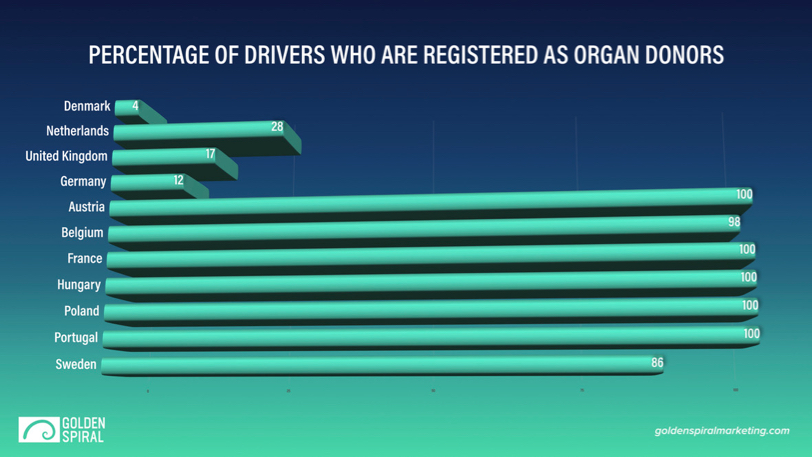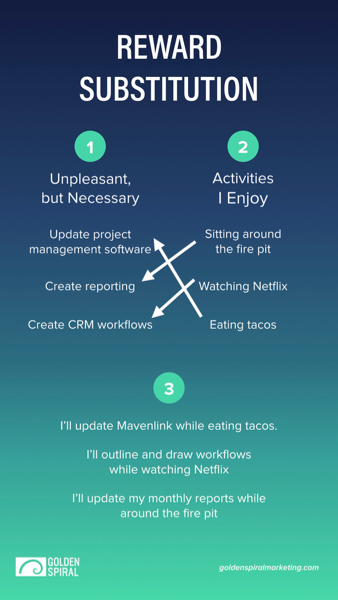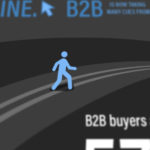Marketing, Behavioral Economics, and B2B Tech Success

The Article in 60 Seconds
Is marketing about convincing people to choose the best solution?
If we believe this, we spend a lot of time, money, and energy to only position our B2B solutions so prospects will make logical decisions.
However, the field of behavioral economics challenges our assumptions. Will your customers make logical, rational buying decisions, or will other factors enter in?
Behavioral Economics explores:
- how we make rational and irrational decisions
- how defaults in buying – like combo packs — raise our revenue
- preferring the buyer’s benefit over our own
- how humans are biased to the present
Think About This
Harvard Business School professor Gerald Zaltman says that 95% of our purchase decision-making takes place in our subconscious minds.
Companies that apply the principles of behavioral economics outperform their peers by 85% in sales growth and more than 25% in gross margin.
Loss aversion implies that one who loses $100 will lose more satisfaction than another person will gain satisfaction from a $100 windfall.
What is Behavioral Economics?
 Behavioral economics lives at the intersection of human behavior and traditional economics.
Behavioral economics lives at the intersection of human behavior and traditional economics.
This relatively new field of study evaluates how your customers make decisions and explores the mechanisms that drive public choice.
In the last 10 years, Dan Ariely, PhD, has popularized the theories of behavioral economics through his books, videos, interviews, and participation in TED and TEDx events. He serves as the James B. Duke Professor of Psychology and Behavioral Economics at Duke University.
How does Behavioral Economics Apply to B2B Marketing?
Many B2C companies use the principles of behavioral economics for consumer marketing. It also gives valuable insight to inform B2B tech marketing. We have gleaned three truths that can be applied to your next marketing strategy, plan, and content.
- First, when offered a default response, decisions are easier. Reduce the friction in the marketing and sales process by streamlining the process of purchasing your B2B tech solution.
- Second, create trust and loyalty by demonstrating you prefer the buyer’s benefit over your own benefit. Find ways to show your solution’s impact and highlight how the solution can be customized for your customer’s needs.
- Third, humans are biased to the experience of the present, so focus on the immediate or near-term value your solution can deliver.
If Your Customers Don’t Make Logical, Rational Buying Decisions, How Should You Adjust Your Strategy?
How Irrational Buying Decisions Can Inform Your Next Marketing Strategy
Ariely’s first book in 2008, Predictably Irrational, hit the New York Times bestseller list. His writing focused on research that revealed that people make irrational decisions concerning:
- personal finance
- sex
- eating
- exercise
- and more
Building on the behavioral economics theories of Kahneman and Tversky, since 2008, Ariely has identified ways to leverage the principles of behavioral economics in other fields, including B2B.
1. Make Your Customers’ Decisions Easier by Offering a Default Response Option
The study, “Defaults and Donation Decisions” by Eric J. Johnson and Daniel G. Goldstein points to how we can save more money, be more generous, eat less, and live healthier lives. Ariely summarizes the study in this short YouTube video [also embedded above].
In a study of organ donation trends, Johnson and Goldstein reviewed research that shows that presumed consent increases agreement to be a donor. They compared countries with opt-in (explicit consent) and opt-out (presumed consent) defaults. Their analysis showed that countries who promote organ donation and instruct those who do not want to be donors to opt out have significantly higher organ donation trends than countries where donors have to opt-in.
 While the findings are easily applied to health policy and consumer marketing, B2B tech marketers can also be choice architects and identify ways to leverage the fact that your customers are adverse to exerting effort to decide and buy. Removing friction from the buying journey is important when developing your B2B sales and marketing strategy.
While the findings are easily applied to health policy and consumer marketing, B2B tech marketers can also be choice architects and identify ways to leverage the fact that your customers are adverse to exerting effort to decide and buy. Removing friction from the buying journey is important when developing your B2B sales and marketing strategy.
Here are a few questions to brainstorm to apply behavioral economics to your next strategy:
- Could your solutions be bundled by default?
- How simple is it to contract with your company? What defaults could you put into place to expedite contracting?
- Is renewal of your contracts automatic? Do your customers have to opt out of renewal?
- How can you create marketing campaigns with very little friction, so that target buyers can easily consume your content, connect with your solution, and request a demo?
- Are there partnerships or channel relationships where your solution could be integrated or bundled with another company’s solution? How could the combined solution become a default option when customers renew or when a new customer is signed?
2. Create Trust and Loyalty by Demonstrating You Prefer the Buyer’s Benefit to Your Own Benefit
Dan Ariely highlights how trust is fragile and distrust is stable. To build trust with customers, Ariely recommends that companies:
- Invest in and celebrate established and lengthy relationships as they have the most trust
- Be transparent
- Communicate the WHY of decisions that impact your customers with detail and intentionality
- Allow customers time and space to vent (give space for the counterpunch to create a symmetrical relationship)
- Align incentives by demonstrating that your company is focused on your customers’ interests
In this TEDx talk from Jaffa [cued above], Ariely illustrates trust with a story about how a waiter can create trust and increase revenue. When a restaurant guest orders fish, the waiter says, “No, the fish isn’t good today and expensive. Try the chicken, which is cheaper and better.” The waiter’s recommendations to the next guests for food and wine are accepted because the waiter suggested a cheaper dish to the first person, which demonstrated to the table of guests that the waiter was prioritizing the guest’s interests over his own. This contrasts to the results if the waiter recommended an expensive lobster instead of the fish, creating a distrust of the waiter’s motives.
Your SaaS marketing team can show your target market, prospects, and customers that your company is focused on their benefit. The long-term value of a loyal customer outweighs any potential short-term losses. Think about how you can adjust your sales and marketing strategy to build trust and loyalty.
- What can your marketing content and campaigns focus on that will help your audience be better, smarter, more competitive?
- How can you highlight how your solution is more audience-centric than the competitor’s solution? How can you say, “We’re on your side?”
- Could you create a visual map that shows how your SaaS solution makes your customers more successful?
- How could your solution be personalized or configured for the customer’s unique needs? Could you give them options, show that you want them to have the best solution configuration? We just discussed setting defaults and bundling, but is there a way to set defaults that are mutually beneficial?
- What content or information can you provide that helps your prospect solve a short-term, painful challenge, creating loyalty?
- Can you offer continuing education credits or relevant training to add value to the relationship?
Leverage the Fact that Humans are Biased to the Experience of the Present
Humans live in the moment. This is why long-term behavior change is so difficult. You may say, “I’m going to work out in the morning.” But when the alarm goes off at 5:30 a.m., you may also say, “Tomorrow. I’ll start tomorrow.” We have similar challenges when it comes to saving money and choosing healthy foods in the appropriate portion. We have difficulties translating our current reality into what’s going to happen in the future — making the decisions today to achieve the future we want.
Humans make short-term decisions, regardless of the long-term impact. We are wired to focus on the experience of the present. So how do we make decisions now that are more aligned with our long term goals?
- Reward substitution: Substituting a future reward with an immediate reward. For example, designate your favorite Netflix show as one you can only watch while doing something you do not enjoy — cleaning, exercising, or some other chore.
- Ulysses contract: Changing your environment so there is no temptation to distract from goals. This strategy references the legendary Ulysses who resisted the tempting Sirens that would cause shipwreck. He ordered his crew to lash him to the mast of the ship and had every sailor plug his ears. He avoided the Sirens and eventually reached home by changing his environment. A practical example is to clean out the kitchen and dispose of all unhealthy snacks, replacing them with small portions of healthy snacks.
Humans live in the moment and enjoy the short-term rewards of their decisions. We can leverage this tendency when we design marketing strategies, campaigns, and content.

What are the most immediate and impactful changes your solution brings about during or shortly after onboarding?
If you merely educate your prospects about the long-term impact of your solution, you aren’t likely to spark action now. Can the implementers feel like heroes soon after installing it? What impact will your solution deliver within 30 days? 60 days? 90 days? If your solution makes a quick impact, highlight that fact early and often during the marketing and sales journey.
Offer a discount or add an extra service if the prospect signs within the next 30 days.
How can you expedite the buying decision to solve the customer’s immediate challenge? Being able to make an offer quickly is important when planning for your next trade show or customer meeting. How can you capitalize on the positive feelings to quickly move the prospect closer to signing a contract? Are there easy-to-use pricing tools for sales? Could the development team create a demo that can be quickly customized for a prospect to help them envision how your platform could work for them.
Focus on how to retain your customers.
How the relationship is going NOW is important to the customer and can prompt positive or negative decisions. We covered how marketing can support customer retention in this post.
The First Thing to Do After Reading This Article
Spend 33 minutes watching Dan Ariely’s video at the Games for Change event. Take notes about how behavioral economics directly impacts your sales, marketing, customer services, and retention efforts.


